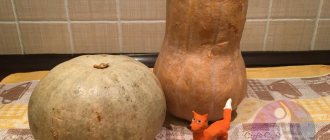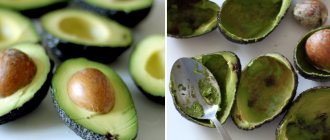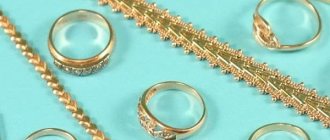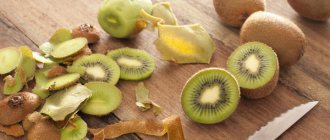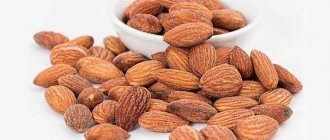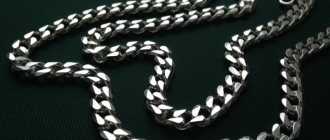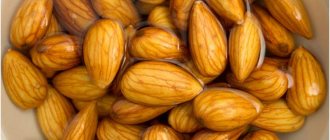Almonds are a delicacy popular all over the world. This fruit contains a whole storehouse of substances useful to humans. But the difficulty lies in the fact that such a valuable product is not so easy to clean. After all, in addition to the shell, the nut also has a thin skin, which is quite difficult to remove.
Shelled almonds are not as tasty and not as healthy as peeled almonds. In addition, the thin film on the nut contains substances that will not have the most favorable effect on human health. These substances can provoke an allergic reaction in the body, slow down and complicate the digestion process.
Therefore, it is necessary to peel almonds.
How to quickly peel almonds at home? Let's figure it out.
What do we have to do?
Many people wonder how to peel almonds. So, everything is actually very simple.
As a rule, the store sells dried nuts in shells. When eating almonds in their pure form, the almonds must be peeled. Also, peeled and roasted nuts (both whole kernels and crushed) are widely used in many culinary recipes, in the preparation of various cakes, cookies, marzipan, pastries and other dishes, both to improve the taste and as a decoration. In all recipes, it is recommended to pre-clean the nuts, since the peel can affect the quality of the finished product, noticeably deteriorating it.
How to peel almonds? Peeling nuts from husks at home is not the easiest or most enjoyable process. How to peel almonds without problems? This can be done in several ways.
Chemical composition and calorie content
The uniqueness of this nut lies in the effect it can have on the human body. The chemical composition can be divided into two categories:
- elements providing nutritional value;
- substances that can be used in treatment.
Nutritional value is provided (per 100 g of nuts):
- Proteins (18.6 g) are an important material for restoring cells and replacing outdated ones with new ones.
- Nonessential acids (8 g) and essential fatty acids (12 g), which can only be obtained in the required quantities from food.
- Fats (57.7 g) provide a third of the nutritional value of the food diet.
- Monounsaturated fatty acids (36.7 g).
- Polyunsaturated fatty acids (12.8 g).
- Carbohydrates (13.6 g) maintain the body's energy at a sufficient level.
- Starch (7 g) reduces appetite and promotes a feeling of fullness.
- Omega-3 and Omega-6 fatty acids (12 g).
It is better to eat almonds without peel and with sugar, which speeds up and facilitates the digestion process.
| Macroelements and microelements (% of the daily value of a person in 100 g of product) | Vitamins |
| phosphorus (65%) | IN 1 |
| magnesium (67%) | AT 2 |
| calcium (26%) | AT 3 |
| potassium (15%) | AT 6 |
| manganese (99%) | WITH |
| copper (110%) | E |
| iron (46.5%) | |
| zinc (28%) |
The healing properties are determined by the presence of the most important components:
- macroelements - participate in metabolism in the body;
- microelements - are part of biologically active compounds;
- Vitamins are organic substances necessary for the functioning of the body.
The calorie content is quite high - 609 kcal.
Peeling almonds
Take a deep bowl and pour almonds into it. Then pour boiling water and leave to cool for 10 minutes, or just boil for no more than 1 minute. Then drain the hot water and pour cold water over the almonds for about 5 minutes. After this, press on the nut. If it easily pops out of the shell, then the trick was a success and you can start cleaning. Otherwise, repeat the procedure.
What is positive about this method (peeled almonds) is that:
- nut kernels practically do not break during peeling;
- high-quality cleaning.
What is negative about this method is that:
- the cleaning process takes a lot of time;
- nuts are processed one at a time.
After peeling, the nuts must be placed on a sheet or paper on a wire rack and placed in a warm oven (temperature up to approximately 80 degrees). Keep them there as long as they soak until completely dry (about 40 minutes). And only then fry in a frying pan or in the oven at temperatures up to 200 degrees.
How to use after?
Husk
Peanut husks can be used in gardening as a source of nitrogen to fertilize poor soil. To do this, in the fall or spring, when digging up the soil, scatter dry peanut skins onto the soil in a thin layer.
From the dry shells you can prepare a medicinal cough tincture. It can only be used in consultation with your doctor if you have a severe cough or sore throat.
Important!
Peanut husk tincture should not be given to children under 4 years of age!
Peel
- The shell is a good source of minerals for the soil, in addition, it has a repellent effect on some pests and their larvae. To use as fertilizer, all collected hard shells are burned to ash and added when digging up an area or into holes when planting various crops.
- Peanut shells are highly flammable, so they can be used as kindling for a stove or barbecue. A layer of shells is placed on the bottom of the grill or oven, and firewood or coal is placed on top.
- Lightly crushed shells can be used mixed with straw as mulch. For 1 part straw use 0.5 parts dry peanut shells.
Peanut beans can be consumed either with a thin reddish husk or in peeled form. Peeling peanuts is easy - when roasting or water processing, the thin skin easily comes off the kernels. When consuming unrefined kernels, you should remember that their reddish shell is a strong allergen, and if consumed in large quantities it can cause gastrointestinal disorders.
Peeling almonds with a towel
Just as in the first case, pour almonds into a deep bowl and pour boiling water for 10 minutes, or boil for 1 minute. Then the water is drained, and the nuts are poured onto the table on half of a towel laid out in advance. Cover the almonds with the other half of the towel and rub them vigorously with your hands. Then they select already peeled nuts, and the rest are also tindered. The procedure is repeated until all the nuts are shelled.
The good thing about this method is that it is faster than all others. The bad thing is that:
- not all nuts will be shelled;
- the towel not only gets dirty, but may even tear;
- not all nuts will be intact after peeling.
Then dry in the oven at a temperature of no more than 80 degrees. Don't forget that peeling the almonds is the first step. Remember that the last process is very important, and in order not to mess with it, you should take the matter seriously.
Removing the shell
- The nuts are enclosed in a shell that is quite compacted. The degree of hardness depends on how ripe the product is. Some varieties have a thin shell, so they break quickly. Some even manage to split it with their fingers.
- If you are presented with a specimen with a denser shell, then you cannot do without available devices. It must be broken and done so as not to crush the core inside. For this purpose, use pliers, a hammer, a garlic press or a nut cracker.
- During the splitting process, you need to place the nuts in such a way that they do not bounce off after contact with the hammer. Some people advise placing the fruit on its edge, but this is risky. Use your own discretion.
- If you often collect almonds, then chop them and subject them to further processing, we advise you to fork out the cash and buy a nut cracker. It is quite compact, convenient, and relatively cheap. After placing the nuts in the hole, the shells crack easily. You just need to get the core.
Peeling almonds
To remove the shell from the nuts, they must be placed in a colander. Then place in boiling water, keep in boiling water for several seconds (up to 1 minute). Then take them out and check if they are easy to clean as follows. Take 1 or 2 nuts and squeeze them with two fingers. If the peel is easy to peel, the nuts are removed from the water and peeled with your hands, squeezing between your fingers.
After cleaning, be sure to dry it in the oven at a temperature of 50-80 degrees. Then fry in a frying pan or in the oven (temperature 180-200 degrees).
Why dry nuts?
Why should nuts be dried at all? After collection, they contain a certain percentage of moisture and a fairly large amount of oils. High humidity is an excellent environment for the proliferation of pathogenic microorganisms, including mold-forming fungi. And oils, when stored for a long time and exposed to oxygen, can oxidize and become less useful (in some cases even harmful), as well as unpleasant in taste and bitter. Drying will preserve all the beneficial properties of the product and its taste, and extend its shelf life.
Peeling almonds using a bag and a rolling pin
Pour almonds (almonds in shell) into a deep bowl, pour boiling water over them, and leave for no more than a minute. Then drain the water and pour the nuts into a small bag. Place the package on the table. And use a rolling pin or your hands to grind the bag of almonds. Then pour the contents of the bag into a sieve, the shells will be at the top and the nuts at the bottom.
Select peeled almonds and dry them in the oven (at temperatures up to 80 degrees). You can fry it either in a frying pan or in the oven (temperature range 180-200 degrees). You can set it a little more or a little less degrees - pay attention to the fact that everyone has their own oven and it heats up and works differently.
Beneficial features
Almonds come in two varieties - sweet (with tasty fruits) and bitter (with a higher concentration of all substances, but raw ones are inedible). Green almonds are also eaten - the unripe fruits have a sour taste and many beneficial qualities.
- All the benefits of almonds are determined by its composition:
- Provides bone strength and health with a set of minerals.
- It has an effect on blood lipids thanks to vitamin E (a powerful antioxidant).
- Cleanses internal organs.
- Activates brain activity - affects concentration and energy replenishment.
- Strengthens vision.
- B vitamins improve digestion and kidney function, and also keep teeth, hair and skin in good condition.
- Used in the treatment of anemia, asthma, intestinal ulcers.
- Fights insomnia.
- Lowers cholesterol levels and promotes the treatment of cardiovascular diseases, strengthens the walls of blood vessels.
Regular consumption strengthens the immune system, increases the body's resistance to viral infections and keeps the human nervous system in balance.
Peeling almonds
Place almonds in a deep bowl. Fill with water (not boiling water) and leave overnight. In the morning, drain the water and peel the almonds by squeezing the kernels with your fingers, or wrapping them in a towel and pressing on them (cleaning nuts with a towel).
With this method, the nuts take longer to dry in the oven (temperature from 50 to 80 degrees) than when scalding them with boiling water.
Store peeled almonds in an airtight container in a cool place. Now you know how to peel almonds and how to process them correctly.
Storage methods
To enjoy the excellent taste of almonds, it is necessary not only to purchase, peel and roast the kernels correctly, but also to store them correctly.
Almonds absorb foreign odors very quickly, so they should be stored in a carefully closed package or container. The container must be perfectly clean and dry. It is better to avoid plastic containers and use a glass jar. Direct sunlight will also quickly spoil the nut, so it must be stored in a dark place. Well, if you followed all the rules for storing almonds, but still feel their rancid taste, it means that you initially purchased a spoiled product in the store.
Peeled almonds are a tasty and healthy treat that will saturate your body with vitamins, microelements, antioxidants and other beneficial substances.
